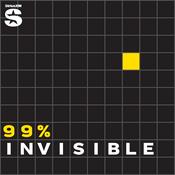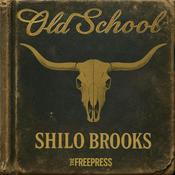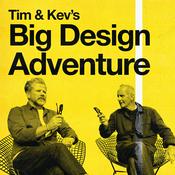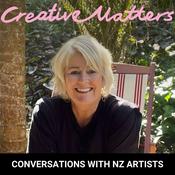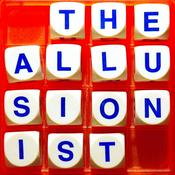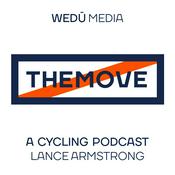Available Episodes
5 of 229
- Composition Made Simple: The Rule of Thirds for BeginnersSend us a text📸 Photography Explained Podcast - Episode 221🎯 Composition Made Simple: The Rule of Thirds for BeginnersHost: Rick McEvoy 🇬🇧 | Duration: ⏱️ 23 minutes⚡ What Is This?The Rule of Thirds is a cheat code 🎮 that instantly makes your photos more interesting. Divide your frame into 9 equal parts (like noughts and crosses), place your subject on the lines or intersection points, and watch your photos transform.Works for cameras 📷 and phones 📱. No jargon. Just results.🎓 The 7 Essential Tips📍 1. Position Your SubjectPut eyes on intersection points for portraits. Near the line is fine.🏔️ 2. Landscape HorizonsInteresting sky? → Horizon on lower third Interesting foreground? → Horizon on upper third🏃 3. Action & MovementGive moving subjects space to move into the frame.⚠️ 4. Avoid These MistakesDon't obsess over pixel-perfect alignmentDon't forget about your backgroundDon't use it mindlessly🔓 5. When to Break the RuleSymmetry, patterns, and tight portraits often work better centered.🔗 6. Combine with Other TechniquesUse with leading lines, negative space, and framing.🏛️ 7. Architectural PhotographyPosition buildings on vertical lines. Keep verticals vertical.📋 Quick RecapThe Grid: 2 horizontal + 2 vertical lines = 9 equal parts The Power Points: 4 intersection points where lines cross The Default: Use it for everything until you know when to break it🎬 Your Challenge1️⃣ Turn on your grid (Settings → Camera → Grid) 2️⃣ Take 3 photos using the Rule of Thirds 3️⃣ Take the same 3 photos centered 4️⃣ Compare and see the difference📱 Phone UsersiPhone: Settings → Camera → Grid ✅ Android: Camera app → ⚙️ → Grid Lines ✅Pro Tip: Tap to focus on intersection points = perfect focus + composition! 🎯🔗 More Episodes📻 220: The Photographer's Eye - See Great Photos Before You Take Them 📻 218: Train Your Eye - Master Photography Right Where You Are 📻 217: The Art of Light - From Harsh to Heavenly🚀 Next Week: Episode 222The Best of The Photography Explained Podcast: 20 Essential TipsRick's going through 220+ episodes to pull out the absolute best. Can't wait! 🤩🔗 Connect with Rick🌐 RickMcEvoyPhotography.com ▶️ YouTube: Search "Rick McEvoy" 🎓 Course: How to Become a Real Estate Photographer 📧 Weekly emails | 💬 Text Rick from the podcast feed🥪 Episode SponsorCheese and pickle sandwich 🥪 + Coke Zero 🥤Consumed in Rick's homemade, acousticallCheck out my splendid course How To Become A Real Estate Photographer on my website Rick McEvoy Photography.com/courses Check out my splendid course How To Become A Real Estate Photographer at Rick McEvoy Photography.comSupport the showGet your question answeredThis is what my podcast is all about: answering your photography questions. Just head over to my shiny new website to find out more about me, my podcast and my photography.Thanks very much for listeningCheers from me Rick--------21:50
- The Photographer's Eye: See a Great Photo Before You Take ItSend us a textEver wonder why some photographers spot amazing shots everywhere while you're standing in the same place seeing nothing? 👀 They're not lucky—they've trained their photographer's eye, and you can too! Host Rick McEvoy reveals the exact skills that separate snapshots from photographs. Learn to see light, composition, and decisive moments BEFORE you press the shutter. No expensive gear required! ✨💥 What You'll Master in This Episode:* Light First, Always 🌅💡 Why great photographers look at the light before the subject—this single shift changes everything!* Layers & Depth 🏔️📐 Spot foreground, middle ground, and background elements that transform flat photos into three-dimensional images.* Patterns, Lines & Shapes 🔲🔄 Train your eye to see geometric compositions hiding in plain sight—broken patterns and leading lines that work!* The Decisive Moment ⏱️✨ Anticipate and capture that perfect split-second when everything comes together.* Contrasts & Relationships 🔄⚖️ Big vs small, old vs new—spot visual stories that make photos memorable.* Ruthless Simplification ✂️🎨 Know what to EXCLUDE from your photos—less is always more!🎯 Your Assignment This WeekWalk for 30 minutes WITHOUT your camera. Point at everything you'd photograph and explain why. Next day, take the same walk WITH your camera. This exercise is pure magic! 🪄📱 Works with phone cameras too! The photographer's eye has nothing to do with gear. 🤳📚 Related Resources & Next Steps➡️ Next Episode (Fortnightly): Episode 221: Composition Made Simple: The Rule of Thirds for Beginners 📐⬅️ Last Episode: Episode 219: Why Your Photos Look Flat & How to Fix Them ✨🎯 Foundation Skills: Episode 218: Train Your Eye: Master Photography Right Where You Are 🔍🏠 Ready to Go Pro? Check out Rick's splendid How to Become a Real Estate Photographer course at RickMcEvoyPhotography.com/coursesFind Rick Online: RickMcEvoyPhotography.com 📸#photographyexplained #photographerseye #photographytips #learnphotography #compositiontips #decisivemoment #rickmcevoyThis episode was brought to you by a cheese and pickle sandwich and a Coke Zero 🥪🥤Check out my splendid course How To Become A Real Estate Photographer on my website Rick McEvoy Photography.com/courses Check out my splendid course How To Become A Real Estate Photographer at Rick McEvoy Photography.comThe Best Pizza Franchise OpportunityAnthony & Luca's Pizza Kitchen is the hottest new Cheesesteak & NY Pizza Franchise.Support the showGet your question answeredThis is what my podcast is all about: answering your photography questions. Just head over to my shiny new website to find out more about me, my podcast and my photography.Thanks very much for listeningCheers from me Rick--------29:10
- Why Your Photos Look Flat & How to Fix ThemSend us a textEver wondered why your photos don't look as good as the scene you remember? 🤔 The answer isn't a new camera or expensive software—it's mastering seven simple editing adjustments that transform flat photos into stunning images. ✨Host Rick McEvoy reveals the exact editing workflow professional photographers use on EVERY photo. Learn how to make your images pop without spending hours editing or a fortune on gear. 💥These aren't complex techniques—they're straightforward adjustments that offer massive returns in quality. Start with the best photo you can capture, then take it to the next level! 🎯💥 What You'll Master in This Episode:Crop & Straighten First 🖼️✂️ Refine composition, fix crooked horizons, and verticalize buildings for that clean, professional look.White Balance Magic ⚪🌈 Use the eyedropper tool on neutral greys to instantly correct color casts—game-changing for portraits, interiors, and landscapes.Exposure Control ☀️💡 Go beyond the basic exposure slider to master highlights, shadows, whites, and blacks for perfect brightness.Contrast for Punch 💥 Add depth and drama by making blacks blacker and whites whiter—without clipping your histogram.Dimension with Highlights & Shadows 🌓 Recover detail in bright skies and dark areas for images that feel three-dimensional.Vibrance Over Saturation 🌈🎨 Make colors pop naturally without the cartoonish look—plus the secret of Lightroom's Color Mixer.Sharpening Secrets 🔍 The finishing touch that makes photos crisp without introducing noise or artifacts.📚 Related Resources & Next Steps➡️ Next Episode (Fortnightly): Episode 220: The Photographer's Eye: See a Great Photo Before You Take It. 👁️⬅️ Last Episode: Episode 218: Train Your Eye: Master Photography Right Where You Are. 🎒📊 Deep Dive on Histograms: Episode 114: What Is A Histogram And How Can It Help Us When We Shoot? & Episode 164: Understanding Histograms In Photography.🎨 Is Editing Cheating? Episode 92: Is Editing Photos Cheating? Well Is It? Well What Do You Think?🛠️ Essential Gear: Episode 216: Essential Accessories for Every Photographer (Without Breaking the Bank).🏠 Ready to Go Pro? Check out Rick's splendid "How to Become a Real Estate Photographer" course Check out my splendid course How To Become A Real Estate Photographer on my website Rick McEvoy Photography.com/courses Check out my splendid course How To Become A Real Estate Photographer at Rick McEvoy Photography.comThe Best Pizza Franchise OpportunityAnthony & Luca's Pizza Kitchen is the hottest new Cheesesteak & NY Pizza Franchise.Support the showGet your question answeredThis is what my podcast is all about: answering your photography questions. Just head over to my shiny new website to find out more about me, my podcast and my photography.Thanks very much for listeningCheers from me Rick--------24:56
- 📸 Train Your Eye: Master Photography Right Where You Are🌍Send us a textTired of feeling like you need an exotic location for great photos? 🎒 The truth is, the most amazing photo spots are often right outside your door. The key is learning how to see like a professional photographer. 🎁Host Rick McEvoy gives you his essential 11-Point Checklist for training your eye and taking captivating photos, no matter where you are. Stop just looking, and truly see the world around you! ✨💥 What You'll Master in This Episode:Light First! ☀️💡 Always look for the best quality of light before the subject—it's the #1 way to instantly elevate your shots.Embrace the Ordinary 🧱🌳 Find compelling subjects in everyday things like brick walls, puddles, or tree bark right where you live.Depth and Dimension 💥➡️ Use layers, leading lines, and separation to eliminate flat images and add depth.The Power of Perspective ⬆️⬇️ Why you must look up, look down, and find frames within frames (Frame within a Frame 🔲).Simplify Ruthlessly 🖼️✂️ Fill the frame and eliminate anything that doesn't contribute to the story.The Secret Weapon 🌧️💨 Why the best, most moody photos are taken in bad weather (rain, fog, and snow!).📚 Related Resources & Next Steps➡️ Next Episode (Fortnightly): Episode 219: Why Your Photos Look Flat & How to Fix Them. 🛠️⬅️ Last Episode: Episode 217: The Art of Light: From Harsh to Heavenly. 💡🏞️ More Landscape Tips: Revisit Episode 213: Your First Five Steps into Landscape Photography (Even in Your Local Park).🏠 Ready to Go Pro? Check out Rick's splendid "How to Become a Real Estate Photographer" course on the Courses Page.Find Rick Online: Rick McEvoy Photography🔎 Optimised Hashtags (for Searchability)#photographyexplained #trainyoureye #photographymindset #compositiontips #learnphotography #beginnerphotography #localphotography #findthelight #streetphotography #landscapephotography #rickmcevoy #photographytips #visualarts #photoskills #creativephotography #photographypodcastCheck out my splendid course How To Become A Real Estate Photographer on my website Rick McEvoy Photography.com/courses Check out my splendid course How To Become A Real Estate Photographer at Rick McEvoy Photography.comSupport the showGet your question answeredThis is what my podcast is all about: answering your photography questions. Just head over to my shiny new website to find out more about me, my podcast and my photography.Thanks very much for listeningCheers from me Rick--------15:44
- 📸The Art of Light: From Harsh to Heavenly ✨Send us a textWhat transforms an average photograph into a stunning one? It’s light. Photography literally means "drawing with light" ✍️, but simply having light isn't enough—you need to understand how to use it as a creative tool 🎨.In this essential, practical guide, host Rick McEvoy shows you how to stop fearing "bad" light and start seeing it as an opportunity. We dive deep into the five core principles of photographic light, covering everything from the physics of harsh vs. soft light ☀️☁️, to the secrets of the Golden and Blue hours 🌅🌃.If you’ve ever struggled with blown-out highlights, heavy shadows, or flat images, this episode provides simple, actionable tips to help you transform everyday shots into captivating, professionally lit works. Light is photography's most essential ingredient! 🔑🌟 5 Practical Tips for Mastering Light 💡This episode breaks down the art of light into five easy-to-understand and immediately applicable tips for better photos:Seeing the Light: Quality is KeyUnderstand the difference between harsh, high-contrast light (midday sun ☀️) and soft, diffused light (overcast day ☁️) and learn when to use each for maximum impact.Struggling with strong sunlight? Revisit Episode 209.Shaping Your Subject: The Power of DirectionExperiment with front, side, and backlighting ➡️⬅️⬆️ to sculpt your subject and add crucial depth 🖼️.Side lighting creates three-dimensionality and texture—it’s where the magic truly begins! ✨The Magic Hours: Timed to Perfection ⏰Plan your shoots around the soft, warm glow of the Golden Hour 🌅 and the rich, serene tones of the Blue Hour 🌃.These times are nature's perfect, built-in filter 🎞️.Embracing Flat Light: Overcast & Open ShadeDon't dismiss a cloudy sky! 🌧️ An overcast day acts like a giant, natural softbox, providing beautifully even, flattering light that is ideal for portraits 😊 and product details 📦.Use open shade (under a tree 🌳 or awning 🏗️) for instant soft lighting.Painting with Shadows: Creative ContrastDon't fear shadows 👻; use them as powerful compositional tools to add mystery and drama 🎭.Shadows can create leading lines 〰️ or hide distracting elements, simplifying your scene and making your subject pop! 💥🚀 Your Photography Homework ChallengeGrab your camera or phone 📱 and choose a single subject (a mug ☕, a tree 🌲, or even a friend 🤗). Now, photograph it from the same spot at different times of day (midday, late afternoon, dusk) and from different angles relative to the light.Compare your photos to see how simply observing and working with light makes all the difference!🔗 Related Resources & Next StepsNext Week: Episode 218: Why Your Photos Look Flat & How to Fix Them. 🛠️Need to check your camera settings? Listen to Episode 211: Check out my splendid course How To Become A Real Estate Photographer on my website Rick McEvoy Photography.com/courses Check out my splendid course How To Become A Real Estate Photographer at Rick McEvoy Photography.comSupport the showGet your question answeredThis is what my podcast is all about: answering your photography questions. Just head over to my shiny new website to find out more about me, my podcast and my photography.Thanks very much for listeningCheers from me Rick--------21:48
More Arts podcasts
Trending Arts podcasts
About Photography Explained Podcast
Photography stuff explained in plain English by me, Rick, in less than 27(ish) minutes without the irrelevant details.I explain one photographic thing per episode, providing just enough information to help you understand it, improve your photography and take better photos, all without delving into endless, irrelevant details.I am a professionally qualified photographer based in the UK and amongst other things I help photographers take better photos.If you want me to answer your question, head to rickmcevoyphotography.com/podcast.How utterly splendid.
Podcast websiteListen to Photography Explained Podcast, This Life of Mine with James Corden and many other podcasts from around the world with the radio.net app
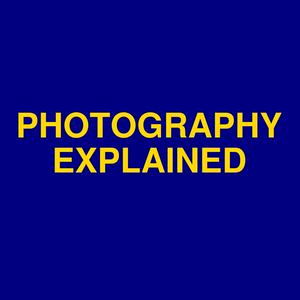
Get the free radio.net app
- Stations and podcasts to bookmark
- Stream via Wi-Fi or Bluetooth
- Supports Carplay & Android Auto
- Many other app features
Get the free radio.net app
- Stations and podcasts to bookmark
- Stream via Wi-Fi or Bluetooth
- Supports Carplay & Android Auto
- Many other app features


Photography Explained Podcast
Scan code,
download the app,
start listening.
download the app,
start listening.



